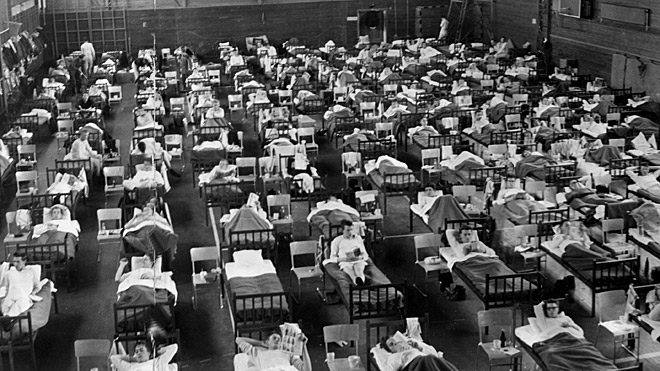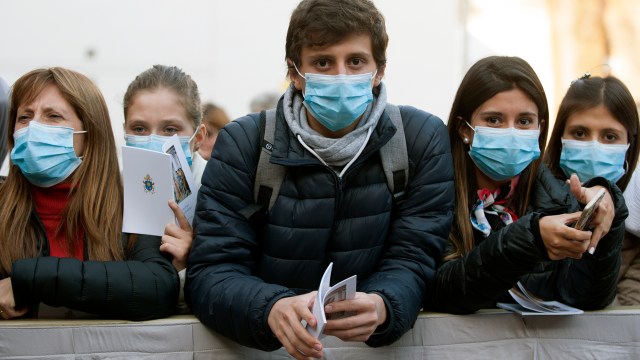Who is actually at the greatest risk from coronavirus?

Image source: China News Service/Getty
- For most people, getting the coronavirus is not life-threatening.
- Those most at risk are the elderly with pre-existing conditions.
- Things may change as the virus replicates, but here’s what you need to know about the risks right now.
As we anxiously watch coronavirus, COVID-19, touch our shores and begin what seems an inexorable march across the United States — as it has been doing across the globe — many of us are naturally wondering, “Just how scared should I be?”
Unfortunately, there’s no definitive answer. First of all, the closest you can get is a statement of your odds of dying from COVID-19. Second, viruses mutate, so the best information only reflects what’s been seen prior to now. Most of what we know so far comes from the virus’ impact in China, where it began.
As of the first week of March 2020, the odds of dying from COVID-19 on average are 2.3%, though that number varies depending on your age.
Your odds of contracting the disease, however, are much higher and dependent on where you are and how much interpersonal contact you have. For the vast majority of people, COVID-19 is not life-threatening. According to one first-hand account published by The Washington Post, having the virus may be an easily tolerated experience. Still, it’s best to avoid it altogether if you can.
As of this moment, here are the groups with the greatest risk of dying from COVID-19.

CHINA WUHAN COVID-19 HOSPITALImage source: Barcroft Media/Contributor
Based on China’s experience with the coronavirus, your chances of acquiring a fatal case of COVID-19 have a lot to do with your age:
- Age | Death Rate
- 80+ | 14.8%
- 70-79 | 8.0%
- 60-69 | 3.6%
- 50-59 | 1.3%
- 40-49 | 0.4%
- 30-39 | 0.2%
- 20-29 | 0.2%
- 10-19 | 0.2%
- 0-9 | no fatalities
Older people with pre-existing conditions such as high blood pressure, heart problems or diabetes are at even higher risk. A study of deaths in Wuhan, China where the disease originated breaks down more interested facts:
Most of the death cases were male (65.9%). More than half of dead patients were older than 60 years (80.5%) and the median age was 72.5 years. The bulk of death cases had comorbidity (76.8%), including hypertension (56.1%), heart disease (20.7%), diabetes (18.3%), cerebrovascular disease (12.2%), and cancer (7.3%).

Wedding Ceremony In Leishenshan HospitalImage source: China News Service/Getty
As noted above, COVID-19 is more fatal for men than women, based on a study of Chinese statistics. This may be influenced by the greater incidence of smoking — which may also increase one’s susceptibility to COVDI-19 — among Chinese men.
That being said, special precaution is also good idea for women who are or are planning to be pregnant. The CDC says:
We do not have information on adverse pregnancy outcomes in pregnant women with COVID-19. Pregnancy loss, including miscarriage and stillbirth, has been observed in cases of infection with other related coronaviruses SARS-CoV and MERS-CoV during pregnancy. High fevers during the first trimester of pregnancy can increase the risk of certain birth defects.

Concerns COVID-19 Cases Are Going Unreported In Southeast Asia
As you wait for your local store to re-stock their supply of hand sanitizer, you’ll want to keep an eye out for possible COVID-19 symptoms:
- Fever
- Cough
- Shortness of breath
Though COVID-19 tests are still not widely available, if you think you could be sick, contact your physician immediately.
If you have coronavirus, follow the CDC’s guidelines:
- Stay at home except to get medical care.
- Separate yourself from other people and animals in your home.
- Call ahead before visiting your doctor.
- Wear a face mask.
- Cover your coughs and sneezes.
- Wash your hands often.
- Avoid sharing personal household items.
- Clean all “high-touch” surfaces every day.
- Monitor your symptoms.
When the virus passes, the CDC recommends extending the period of isolation just to be safe.
Patients with confirmed COVID-19 should remain under home isolation precautions until the risk of secondary transmission to others is thought to be low. The decision to discontinue home isolation precautions should be made on a case-by-case basis, in consultation with healthcare providers and state and local health departments.





